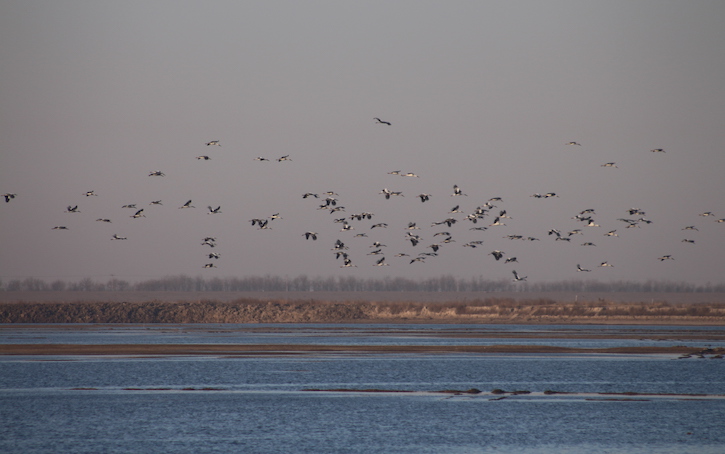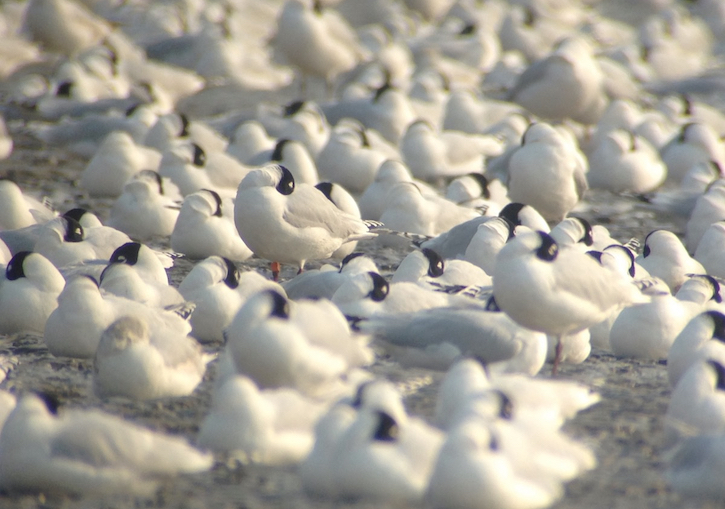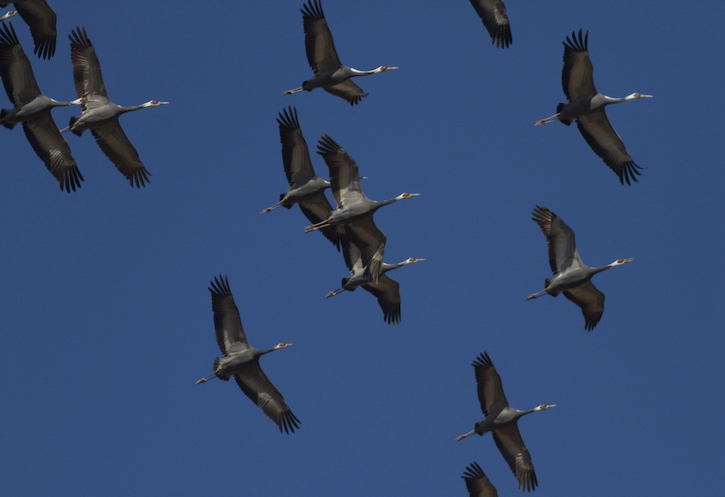
By Terry Townshend
Nearly half a million birds have been logged at Beidagang Wetland, just 150km southeast of Beijing in Tianjin Municipality, revealing that this part of China’s coast is one of the most important sites for migratory water birds along the East Asia-Australasian Flyway. Surveys sponsored by Paulson Institute and Heren Foundation have shown that 467,686 birds from 99 species, including many classified as vulnerable or endangered on the IUCN’s Red List, rely on Beidagang Wetland for staging, breeding and wintering habitats. These results underscore the importance of work to protect China’s coastal wetlands.
Eighteen field surveys were conducted in the Beidagang Wetland starting from July 2017 as part of an initiative by Paulson Institute and the Heren Charitable Foundation to strengthen conservation efforts by introducing international best practice and to support management and capacity building for Beidagang Wetland Nature Reserve Management Center. The surveys were carried out by academics and volunteers from Beijing Normal University, Tianjin Normal University, Beidagang Wetland Management Center, and the Wetland Volunteers Association of Binhai New District.

A key part of the project was to develop a monitoring program in order to understand the diversity, population sizes, and dynamics of important water bird species in Beidagang Wetland and its surrounding coastal wetlands.
Selected highlights from the surveys included:
- The largest ever single count of the vulnerable Relict Gull (Larus relictus), a record 12,767, representing almost the entire global population.
- The number of endangered Oriental White Stork (Ciconia boyciana) at Beidagang was 1,347, representing 45% of the total estimated global population. Breeding was first recorded at Beidagang in 2014 and, in 2018, three pairs successfully reared young.
- A single count of 293 White-naped Crane was recorded at Beidagang in 2018, representing around 20% of the global population.
The surveys also discovered species never before recorded in the area, including the White-headed Duck (Oxyura leucocephala) on 23 October 2018, the Streaked Shearwater (Calonectris leucomelas) on 5 November 2018, the Red-throated Loon (Gavia stellata) on 10 November 2018, and two Snow Geese on 11 November 2018.

Importantly, the research has delivered more than a snapshot of the water birds that use Beidagang Wetland. Next steps will be for the survey team to develop comprehensive guidance on monitoring water birds and other wetland resources that staff at Beidagang Wetland Management Center can use as a foundation for continued, long-term monitoring of this important site. Long-term monitoring is essential to better understand the populations and trends of migratory water birds along the East Asian-Australasian Flyway in order to provide an early warning about species that may be in trouble and to support more informed land management and development policies.
Terry Townshend is the founder of Birding Beijing and an advisor to Paulson Institute’s Conservation program.


